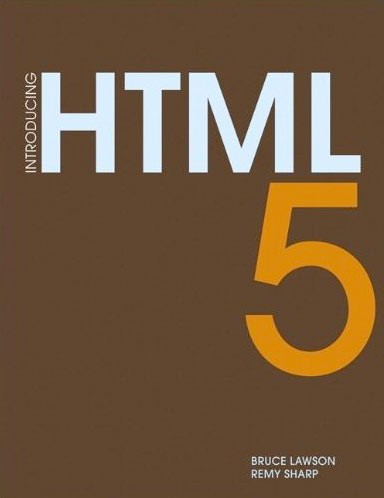Recently, Remy Sharp and Bruce Lawson teamed up to write the excellent "Introducing HTML5." Right now, there's a lot of confusing smoke hovering around the term HTML5: what is it, what's included in it, what can we dependably use, what can't we? Bruce and Remy, in their book, do a fantastic job of of providing the essentials of what you absolutely must know about this developing technology.
Update: Winners Announced
Congratulations to the following winners for being randomly selected to win a copy of "Introducing HTML5."
- @matthiaswh: “Don't overlook microdata in HTML5: http://goo.gl/PdBI #html5edu ”
- @jasonlcrane: “Two great HTML5 resources: http://www.html5rocks.com and http://diveintohtml5.org. Also helpful: http://whatis.partofhtml5.com #html5Edu”
- @mclesceri: "When using HTML5 use
<!DOCTYPE>to start your HTML document. No other definition needed #html5Edu" - @ruidovisual_mx: "Learning HTML5 is not about novelty, it's about evolution. Are you ready? #html5Edu"
- @azzcatdesign: “HTML5 is here now. Use http://www.modernizr.com/ to make IE play nice. #html5Edu ”
- @cssgirl: "html5 - the cure for divitis? - new structural elements like,
<header>,<footer>and<nav>will allow us to use less<div>s. #html5Edu" - @zettersten: "Did you know that html5 #sessionStorage and #localStorage can hold up to 10MB of space where as normal #cookies only hold 4kb! Wow #html5Edu"
- @NKnauth: Use HTML5 and CSS3. Keep innovating and improving the web. If we hadn't, we'd still be stuck on IE6. #html5Edu"
How to Win a Copy
Similar to what we did a few weeks ago with "JavaScript Patterns," to win a digital copy of "Introducing HTML5," you have to educate the Twitter-verse in 140 characters or less on HTML5. It can be as simple or complicated as you can manage! After your tip, hash "html5Edu" to officially enter the contest. On Friday, we'll choose the top ten stand-outs!

Buy the Book
"We’re not one of the HTML 5 spec writers, and we’re not here to persuade you to use it. Our take is that it’s going to happen, so we need to get acquainted. But we’re going to point out (perhaps rant) about the good parts as well as the bad. It’s as far as possible a practical book, showing you how to use the language but some areas of the spec will be discussed theoretically as they’re not yet implemented anywhere."
Chapters
- Introduction: Why HTML5 Exists
- Structuring a Page
- Marking up a Blog and the Outlining Algorithm
- Forms
- Multimedia (video, audio) Markup and APIs
- Canvas
- Storage
- Working Offline
- Drag & Drop
- Geolocation
- Messages, Web Workers and Web Sockets



Comments